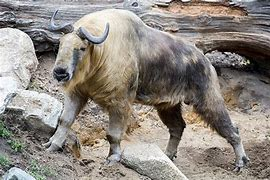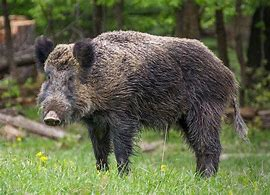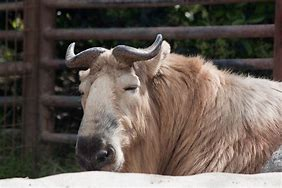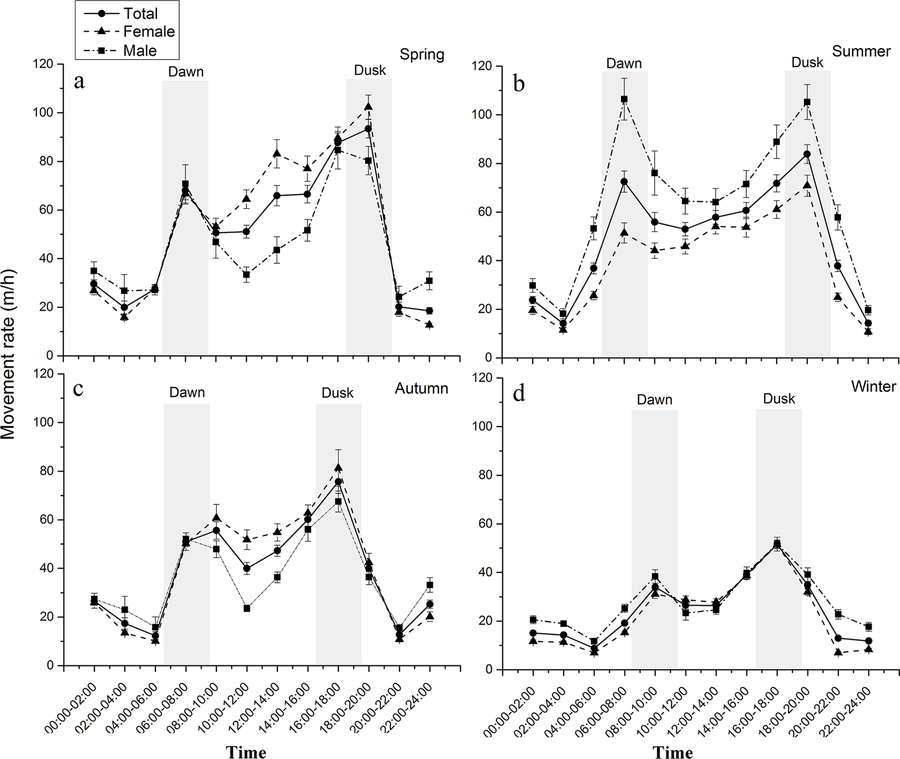
scientific name: Budorcas Takicolor
Takin
Takin's over 50 years
takins population started to decrease because of habitat loss and hunting, making their species vulnerable
Threatened or endangered?
The Takin is listed as vulnerable on the IUCN Red List and considered Endangered in China
current population size
- 12,000
where do Takins currently reside
Asia
Takin's habitat
they live in rocky alpine forest and meadows in the eastern Himalayan region near China
ecosystem role

Takins travel trails to salt licks, which provide minerals but may also help neutralize plant toxins, which if not managed can be harmful or cause death to plants and animals.
Takin's diets.
variety of leaves and grass along with bamboo shoots, rhododendron, and willow pine bark salt is also very important in their diet to make sure stay at a mineral deposit for several day










food web


What characteristics make this species susceptible to decline?
Conversations about hunting laws have been designed to protect the species but their ignored because how difficult it is to enforce in remote locations.

cause of decline
because they live in a low-lying range their vulnerable to habitat loss and exploitation especially in the winter
how have humans contributed to their decline?
humans activities like farming, mining, and hunting for their horns and meat that also contribute to their decline

When and why was the species declared threatened or endangered?
2019 was the last time the IUCN declared the Takin's endangered due to Over hunting,Loss of habitat, especially deforestation, road building, pasture burning Disturbance from tourism Competition and disease transmission from domestic livestock
When did the population decline begin?
2019
graph showing the organism’s population change overtime.

What is currently being done to protect and/or help the species?
San Diego zoo wildlife helps protect Takins and other endangered animals, but have faced problems while trying to preserve this species. conservation laws have already been put in play to protect Takins, but there's no enforcement on these laws because of the remote areas. Human activities encroach on areas occupied by Takins by mining, farming, posture burning bamboo cutting etc. disrupting migration routes and dividing herds. researchers have also learned that climate change in the eastern Himalayas has also played a part in the Takin decline, for example the melting glaciers and declining snowfall, which decrease the growth of shrubs and grassland. The C252 developed 8 fitted radio collars for Takins to study their ecology behaviors to create a breeding program which has been successful in North American zoos
sources
https://www.nature.org/en-us/get-involved/how-to-help/animals-we-protect/takin/#:~:text=Takins%20eat%20a%20large%20variety,its%20mountainous%20environment%20in%20Asia.
https://ielc.libguides.com/sdzg/factsheets/takin/distribution
https://a-z-animals.com/animals/takin/